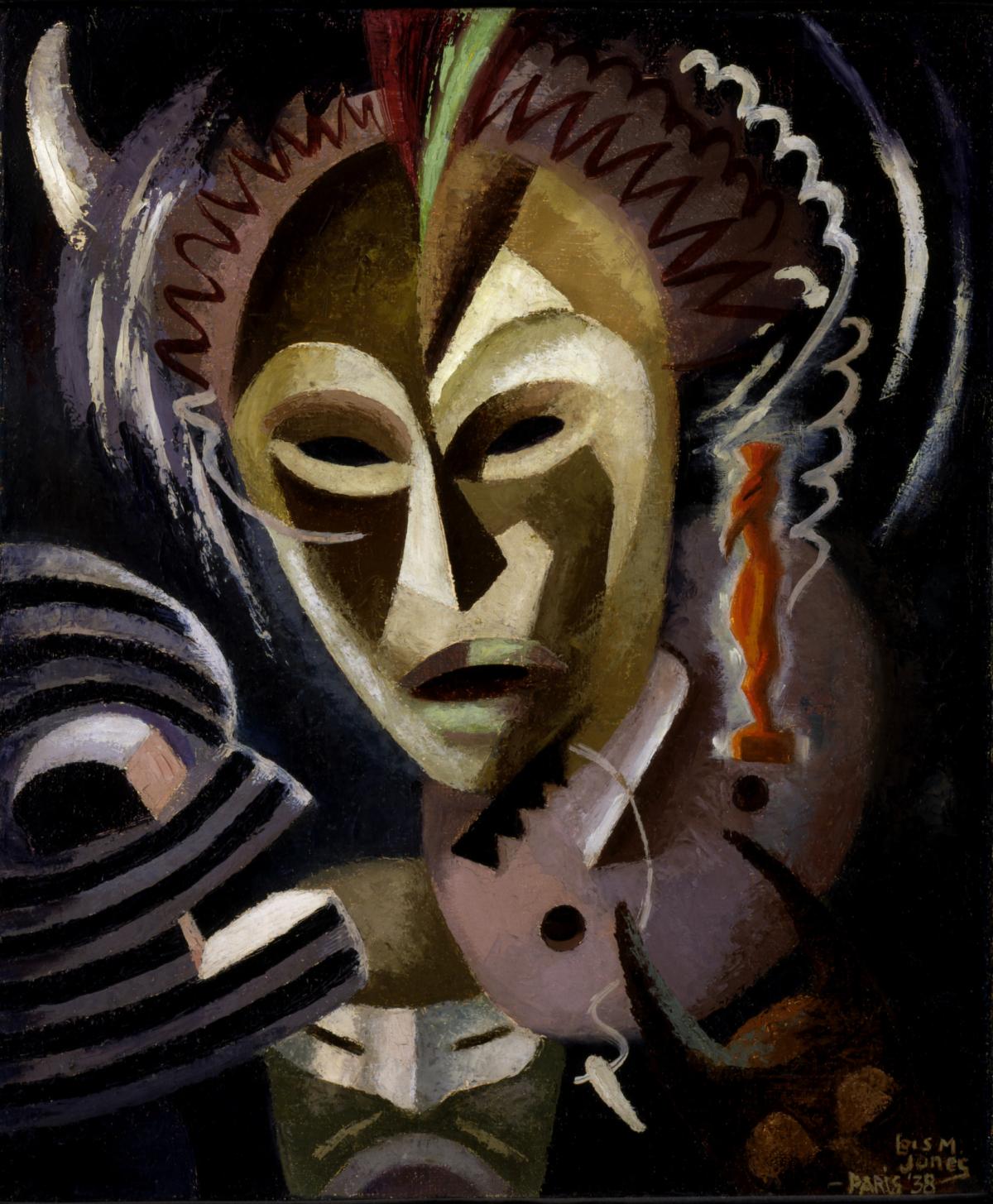The lives of Loïs Mailou Jones and Elizabeth Catlett intersected briefly but formatively in the 1930s at Howard University, a historically Black college in Washington, DC, and a vibrant hub of Black intellectualism. Jones joined Howard’s faculty in 1930 and taught there for fifty years, a rare female professor among a groundbreaking group of African American artist-teachers that included James Herring, James Porter, and James Wells. One of this cohort’s most successful students, Catlett went on to become an artist and educator herself, eventually being appointed the first woman to lead the sculpture department at the Universidad Autónoma in Mexico City in 1958.
Though created decades apart, both Les Fétiches and Singing Head reflect Jones and Catlett’s common desire to address Black identity and experience through art. Jones painted Les Fétiches while on sabbatical in Paris in 1937. The painting’s dynamic, overlapping composition indicates Jones’s knowledge of both European cubist abstraction and African art traditions. Among the masks she depicts is a kifwebe from Central Africa, identifiable by its striped features and rounded dome. Noting that French painters like Pablo Picasso had long taken inspiration from Africa, Jones declared, “If anybody had the right to use it, I did. It was my heritage.”
Catlett was also familiar with African art but was most profoundly affected by the art traditions of Mexico, the country where she settled in 1947. Following the example of activist Mexican artists whose style and subject matter were rooted in a proud connection to ordinary people, Catlett devoted her work to the lives and experiences of African American women. Through simplified form and strong, monochromatic color, the sculpture Singing Head evokes the spirit and song of Black women.
This story is based on text created for SAAM’s special exhibition Artist to Artist that features paired artworks, each representing two figures whose trajectories intersected at a creatively crucial moment, whether as student and teacher, professional allies, or friends.




















